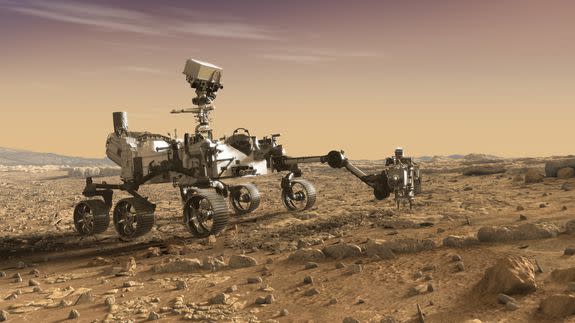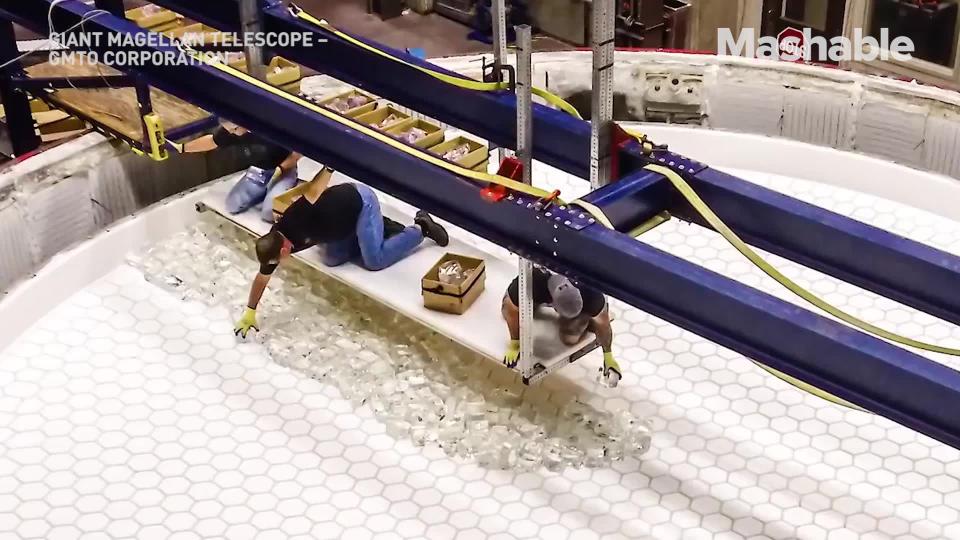NASA will send a tiny helicopter to Mars in 2020

NASA announced that it's sending a helicopter to Mars in a little over two years.
If successful, this aerial Mars explorer, with a body about the size of a football, would be the first helicopter to fly on another planet.
NASA hopes to launch the prototype to Mars with the agency's 2020 rover, which is designed to hunt for signs of past life on the red planet.
SEE ALSO: SpaceX launches, then lands, a brand new version of its workhorse Falcon 9 rocket
“After the Wright Brothers proved 117 years ago that powered, sustained, and controlled flight was possible here on Earth, another group of American pioneers may prove the same can be done on another world," Thomas Zurbuchen, the Associate Administrator for NASA's Science Mission Directorate, said in a statement.
NASA administrator Jim Bridenstine tweeted out the announcement Friday just as an upgraded SpaceX Falcon 9 rocket launched to space.
Engineers at NASA's Jet Propulsion Laboratory (JPL), in California, have been working on the Mars helicopter since 2013, but its late addition to the 2020 Mars rover mission came as a surprise. In the world of space exploration, two years is almost like a last-minute addition before an ambitious launch to the red planet.
After the rover lands on the red planet in 2021 after its launch in 2020, NASA scientists will use the spacecraft's cameras to scan the Martian terrain and find a suitable, flat place to set the tiny helicopter down.
Once the helicopter is settled, the scientists will command it to take off. After that, however, the helicopter will be on its own, flying autonomously.
"We don’t have a pilot and Earth will be several light-minutes away, so there is no way to joystick this mission in real time,” Mimi Aung, the Mars Helicopter project manager at JPL, said in the statement.

Image: Nasa
“Instead, we have an autonomous capability that will be able to receive and interpret commands from the ground, and then fly the mission on its own.”
NASA will test the drone for 30 days to see how it performs in an environment unlike Earth. The Martian atmosphere is quite thin — just about 1 percent of Earth's — so flying in such low air density is a challenge.
If the light, 4-pound craft works, future exploration missions could have similar, though more capable helicopters, which could survey unchartered, alien lands. NASA plans to test the craft up to five times over a 30 day period.
“The ability to see clearly what lies beyond the next hill is crucial for future explorers,” said Zurbuchen.
WATCH: It takes absolute precision to construct Earth's largest telescope, which will peak into far-off alien worlds


